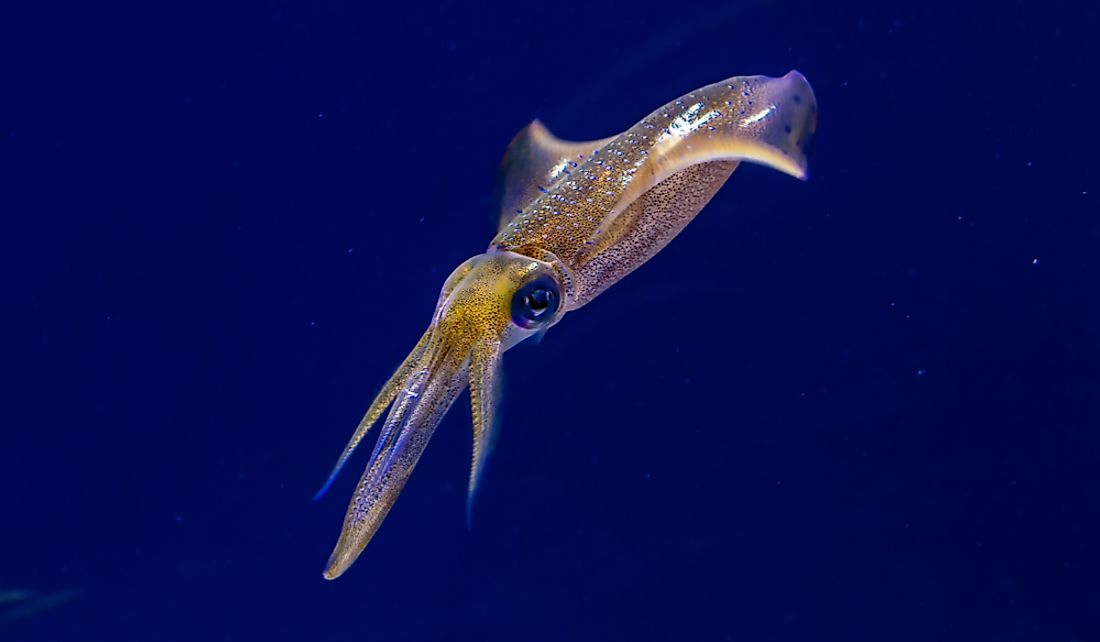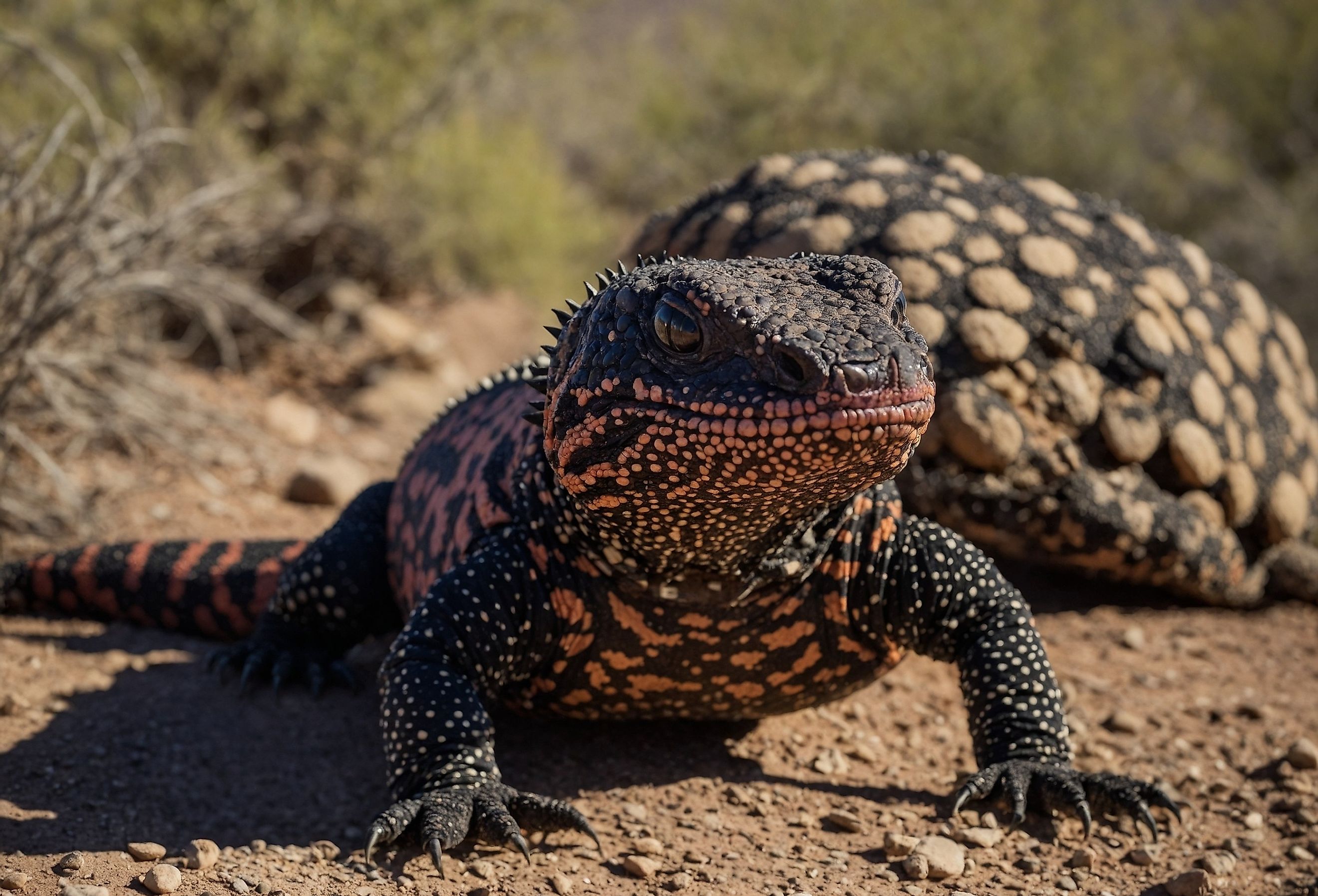
The 12 Deadliest Animals in New Mexico
In New Mexico, the Old West is still very much alive. This former frontier state has seen clashes between settlers and Native American tribes, Americans and Mexicans, and more. In the harsh desert, only the strong survive, and nowhere is that more on display than in New Mexico’s wildlife. The rugged desert climate is home to several deadly creatures that unsuspecting travelers should hope never to come across. Bears, cats, and all venomous creatures native to this state can turn a spontaneous hike into a trip to the emergency room. To help you stay safe on your journey to the southwest, learn more about some of the deadliest animals in New Mexico.
Black Widow Spider
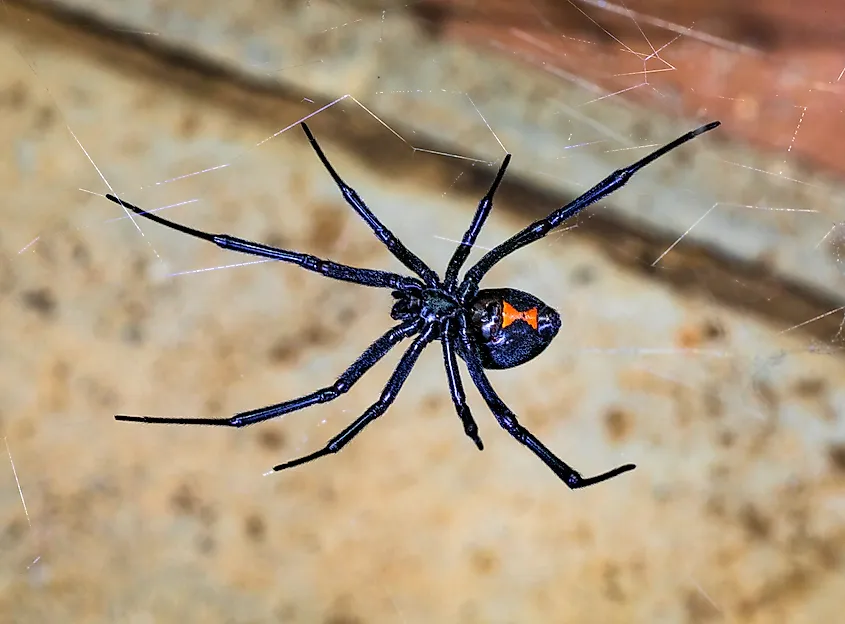
The black widow spider is no laughing matter. It is approximated that four to eight people die from this legendary arachnid's bites each year. Known for its prominent red hourglass coloring on its belly, a bite from this deadly creature causes unbearable pain in victims and can even lead to death. The Alpha Latrotoxin in its bite causes near-unbearable pain for between 12 and 24 hours.
Black widows can be found throughout the state and tend to make their homes away from heavily traveled areas in dark spaces, coming out to ambush prey. Thankfully, antivenom and medical advancement mean the chances of dying from black widow bites are very low. The last reported death in the United States from a bite was in 1983. These spiders mostly want to be left alone and typically will only bite when threatened. Still, with such a nasty bite, the black widow is definitely in contention for the title of the most dangerous animal in New Mexico.
Brown Recluse Spider

Although less than three deaths occur in the US each year due to spider bites, you do not want to be one of them. The brown recluse spider is one of two spiders in the country that are to be avoided at all costs. The brown recluse can be identified with a violin-like marking on its upper back and is often found in dry, warm climates like New Mexico. This arachnid’s bite can be so unremarkable you might not even know you have been bitten.
There are many reports of these bites progressing into cases of necrosis and rotting flesh, which can take months to heal properly, so be sure to check your home carefully for these spiders. Brown recluse spiders live indoors and outdoors throughout the state, usually choosing dark and quiet low-traffic locations. Like the black widow, these spiders only bite when threatened, so be careful and watch out when cleaning your basement and attic for this eight-legged critter.
Western Diamondback Rattlesnake

The diamondback rattlesnake family includes some of the deadliest venomous vipers in the country. This heavy-bodied snake has what is considered to be one of the most powerful venoms in North America and can be found throughout the state in flat plains, grasslands, deserts, and canyons alike. The faster this snake’s tail rattles, the warmer it is. A warm snake has more venom in its body, which can indicate how dangerous it is.
The western diamond-back is extremely aggressive and should never be approached. This animal will rarely be encountered during the day as this snake prefers to come out at night when it is cooler to hunt mice, gophers, and rabbits. They mostly live in rocky areas and underground in burrows throughout New Mexico. Unless you accidentally step on one of these snakes, you should have plenty of warning that you have encountered one of these rattlesnakes. Make sure to leave your noise-canceling headphones at home!
Bark Scorpion
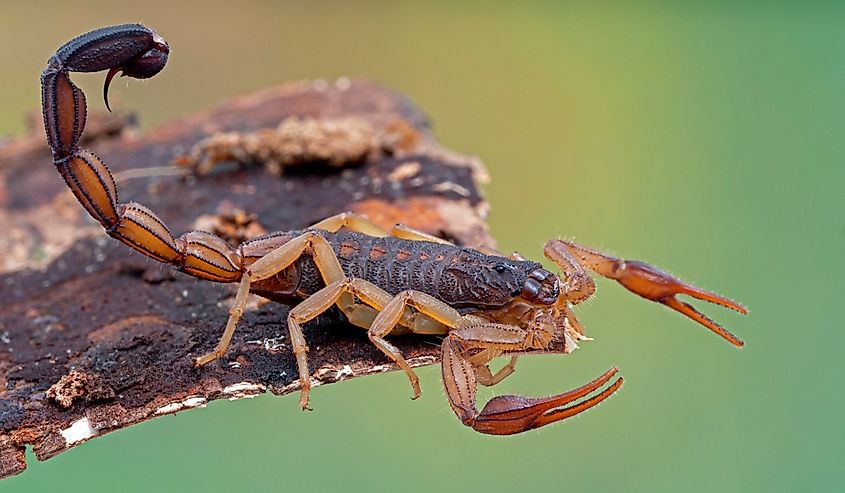
This arachnid is the most dangerous scorpion in North America and has been the cause of two deaths in Arizona since 1968. Yellowish and translucent, this scorpion is a serious concern for people living in the Southwest. The estimated number of injuries in that state and neighboring New Mexico from this scorpion is estimated in the thousands each year. Unlike many other deadly animals, these predators enjoy warmer weather and are much more active during the year’s hotter months.
A sting from the bark scorpion can lead to as much as 72 hours of extreme pain in addition to numbness, tingling, and nausea. They are also resistant to more insecticides, with some being relatively unaffected by the nuclear testing done in the Arizona desert. The best way to prevent bark scorpions from entering the home is by sealing off all points of entry and killing the roaches and crickets that may be in your house, as this is their food source.
Prairie Rattlesnake
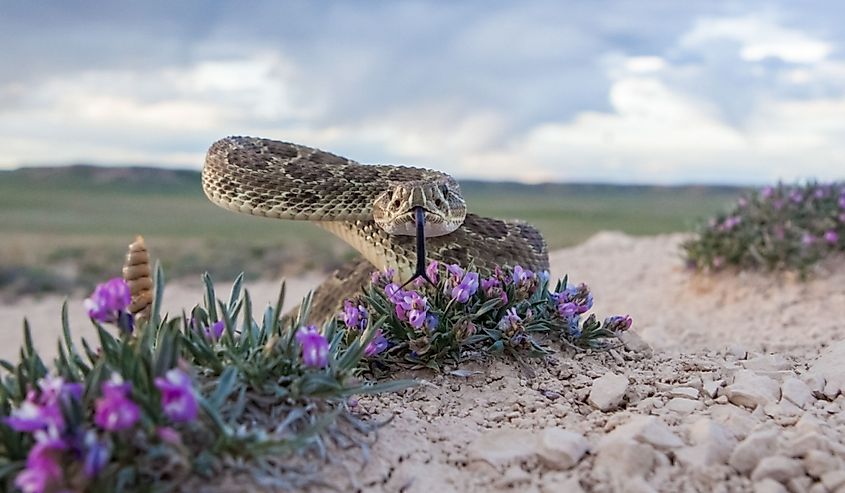
This desert rattlesnake can grow up to five feet in length and lives throughout the Great Plains region, calling a vast swathe of territory from Mexico to Canada home. Because of this, the prairie rattlesnake has the largest range of any snake in the country. Though not as infamous as the diamondback variety, these rattlesnakes are nothing to scoff at. Elderly people with compromised immune systems and children are especially susceptible to potentially lethal consequences due to bites.
Like with other rattlesnakes, it is best to keep an eye and both ears out when hiking through the bush. They typically choose to live in animal burrows and shrubs so they can avoid their natural predators, like the red-tailed hawk and the golden eagle. You can recognize Prairie Rattlesnakes by their triangular heads and the grayish leopard-print scale patterning along their bodies, which gradually give way to rings towards their tails. Be sure to back away slowly if you hear the telltale rattle and call emergency services immediately if bitten.
Gila Monster

The Gila Monster is one of the state's most interesting creatures. Small and feisty, this rare Sonoran Desert reptile is one of only two venomous lizards on the continent. It most often grows to around 22 inches long and is covered in scales resembling black and tan-colored beads. Its bite is incredibly painful, but unlike a viper, the Gila monster is known to latch onto its victims and “chew,” releasing more venom as it does so.
Though not typically fatal, a Colorado man died in February 2024 due to complications arising from a Gila monster bite that hung onto his hand while biting him for four minutes. Gila monsters call southwestern New Mexico their home and typically eat small mammals, frogs, and insects. These protected animal species choose to live in low-elevation desert areas, pine-oak forests, and mesquite grassland areas.
Black Bear
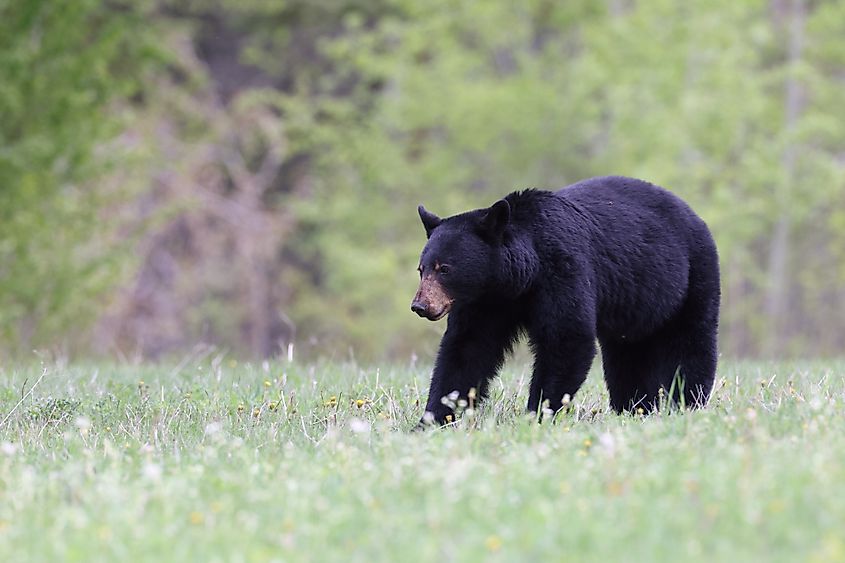
Black bears can be found throughout the country, and New Mexico is no exception. The black bear is New Mexico's state animal. According to a 2019 estimate, the state is home to around 8,000 black bears. They typically range between four and seven feet in length from nose to tail and can weigh as much as 550 pounds. Bears can be encountered throughout New Mexico.
They like to live in forested and mountainous wilderness areas, but an attack near a ski resort in Los Alamos was recorded as recently as 2020.
New Mexico’s black bears are not always black, though. Their coats can be cinnamon, brown, or black. But do not be fooled—there are no longer grizzly bears in New Mexico. Black bears like to find dens in small outcroppings of rocks or tree roots. If you see one in the wild, keep your distance, and if one becomes aggressive, try to make yourself as imposing as possible and shout to scare it.
Feral Hogs
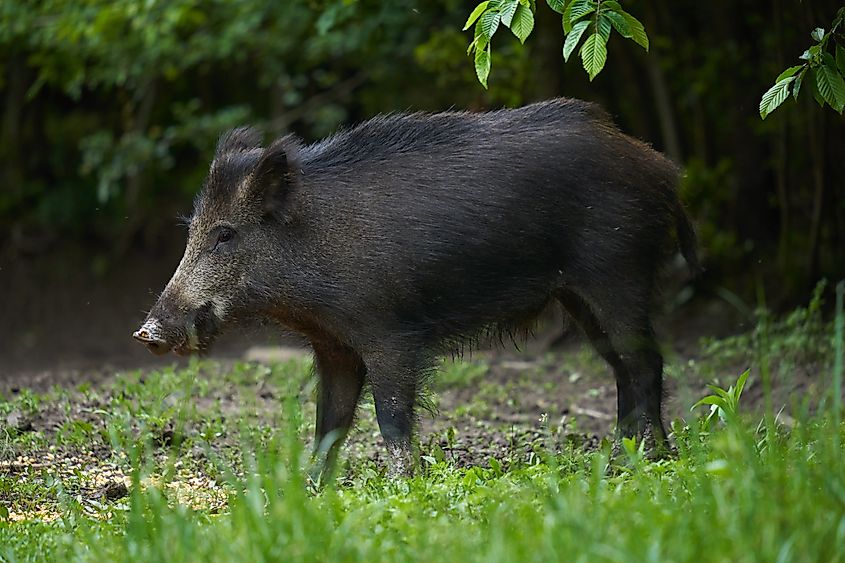
Wild Hogs have become a significant threat to farming in recent years, and they can be dangerous to humans as well. Feral hogs are not indigenous to New Mexico and threaten many native wildlife as they compete for food and shelter. These animals can sometimes even get as big as a black bear, with some specimens getting as big as eight feet in length and weighing up to 600 pounds.
Though they may look like domestic pigs, their black, red, white, or brown coloration and longer snouts set these animals apart. These creatures have sharp tusks, and coarse outer coats, and are highly adaptive to nearly any environment. Be extremely careful around these animals as they are aggressive, travel in packs, and can carry diseases such as toxoplasmosis and swine flu. A woman in Texas was killed tragically as recently as 2019 due to an attack by these animals.
Cougar
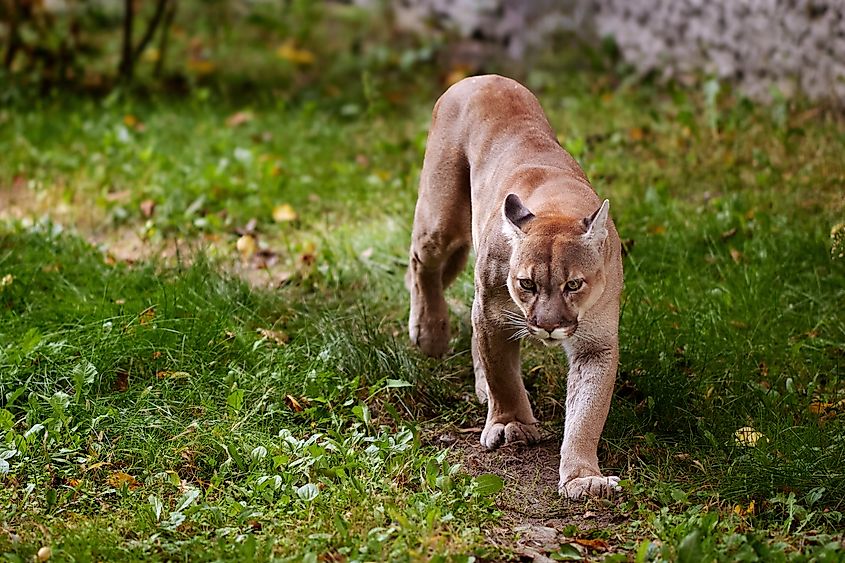
There have been 28 recorded fatalities in the past century due to cougar attacks. Though rare, these animals are apex predators and nothing to trifle with. New Mexico has an estimated 3,494 cougars as of 2023 age 18 months or older. These creatures typically weigh between 80 and 150 pounds. Be warned, cougars in New Mexico typically eat deer and elk, so big game hunting is nothing new to them. To manage these dangerous animals, a bounty system existed statewide on their pelts until 1923.
Mountain lions typically occupy all regions of New Mexico besides the open plains in the east. With their powerful muscles, large teeth and claws, and vision and hearing, which easily surpass a human’s, this is one big cat you do not want to mess with. They can often be found in mountainous areas near campgrounds and at springs and creeks. Protect your neck and fight back as hard as you can if you ever end up tangling with one of these ferocious felines.
Coral Snake

With its beautiful red and yellow coloration, the Coral Snake may be a surprising addition to New Mexico’s deadliest creatures, especially when compared to the more visually fearsome pit vipers of the state’s desert regions. Still, the coral snake is a serious threat in its own right. Its size belies the fact that this snake has a powerful venom in its body that causes paralysis and is highly toxic.
Further, the coral snake is easily mistaken for the harmless milk snake due to their similar coloring. Remember, when red touches black on a snake's body, you are safe. But when red touches yellow, staying far away from the creature is recommended. These snakes are usually too small to bite humans, but this snake, which calls the state’s southwestern corner its home, has been the cause of at least one fatality in the past 40 years.
Horses

Of the 63 deaths caused by animals between 1993 and 2004 in New Mexico, 68% were caused by horses, a study published in 2007 found. Many of those injured were ranch hands and riders who became injured in hard-to-reach areas where speedy medical attention was not possible. These deaths were caused by people being thrown from, crushed, and kicked by these animals.
Although these animals are not predatory in the same way that a cougar is, constant exposure to these animals, whether due to work or because of a rural lifestyle, means the risk of injury or death is significant. Other livestock and farm animals, such as domesticated cows, were mentioned as a significant cause of injury as well. Intoxication was a factor in 16% of the 63 deaths, so drinking and riding is never advised.
Africanized Bees
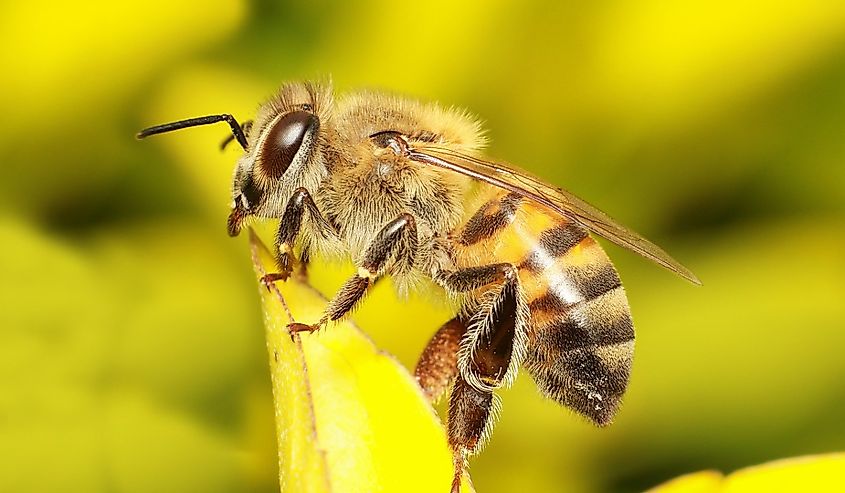
Africanized honeybees are a hybridized bee genus viewed as being highly aggressive and more unpredictable than your garden variety honeybee. They were first discovered in the late 20th century after a stinging incident in Texas, and since then, they made their way to New Mexico. Experts believe they were accidentally released from a research lab in Brazil by way of sub-Saharan Africa in 1956 and then slowly migrated north.
Rightly called "killer bees," these hyper-aggressive bees are unpredictable compared to the gentler, domesticated European honey bees and do not tolerate the presence of humans. Boston Children’s Hospital estimates that 100 Americans die each year from bee stings. These stings can bring on anaphylactic shock, a life-threatening reaction that can cause nausea, swelling of the throat, and heart failure.
New Mexico is a land of enchantment and beauty. From the rugged mesas dotting its landscapes to the awesome desert sunrise, this southwestern state has so much to offer. Like any state, however, New Mexico is not without its risks. Its animals can pose a serious threat to humans and should be treated with the respect they deserve. Keep your wits about you, pay attention to your surroundings when exploring the natural wonderment New Mexico has to offer and stay safe.




